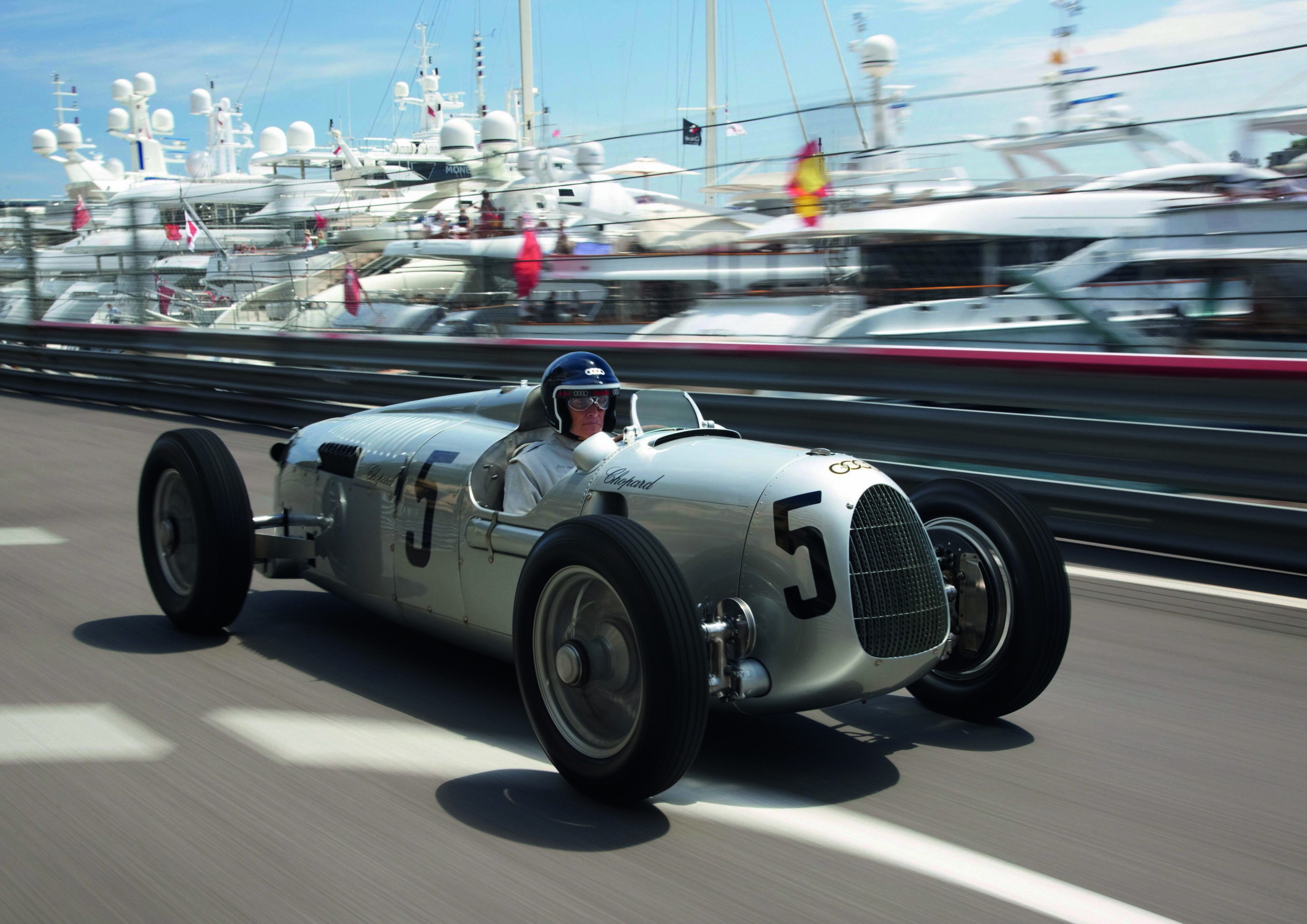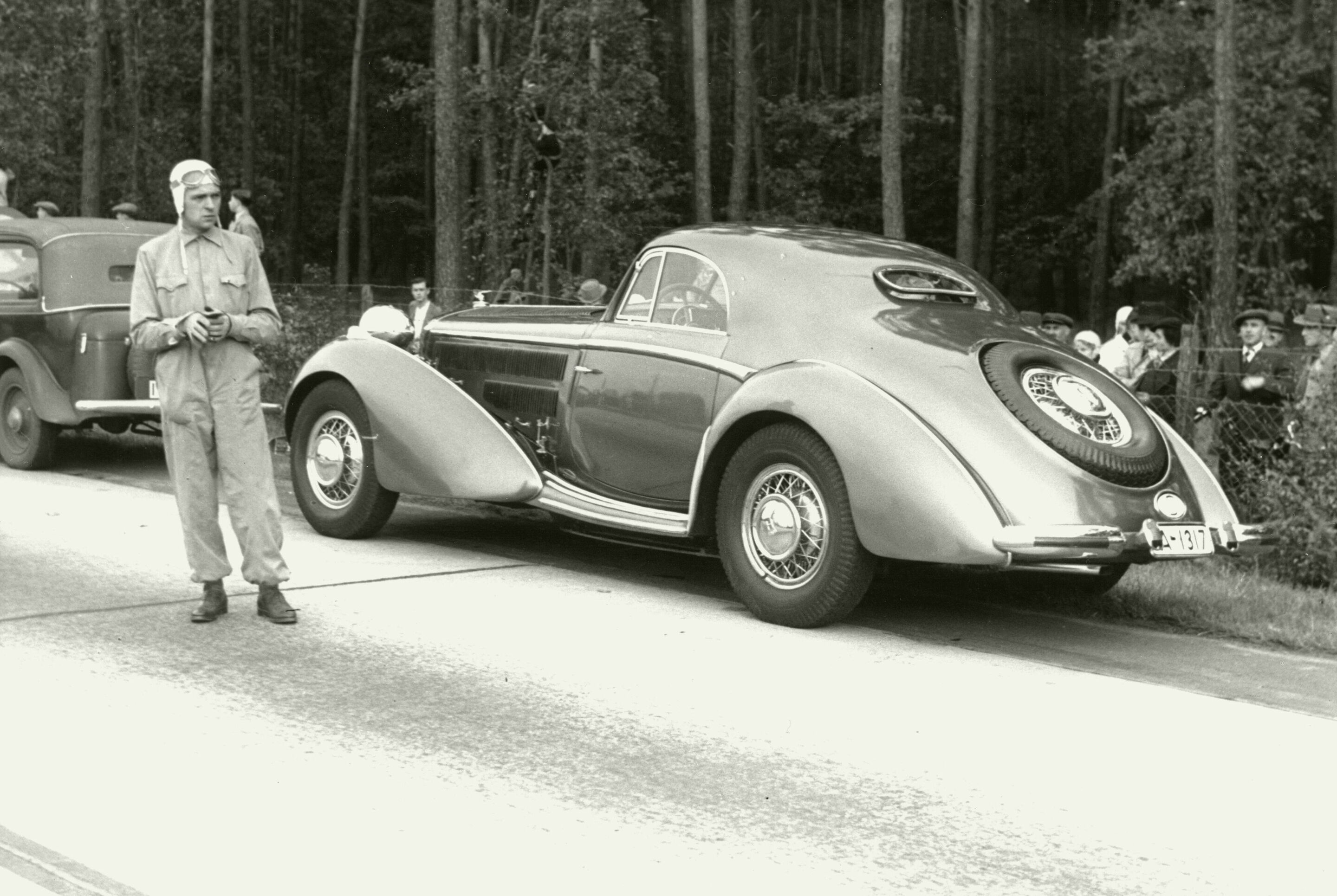Search
All search results for "audi rosemeyer"
(11)
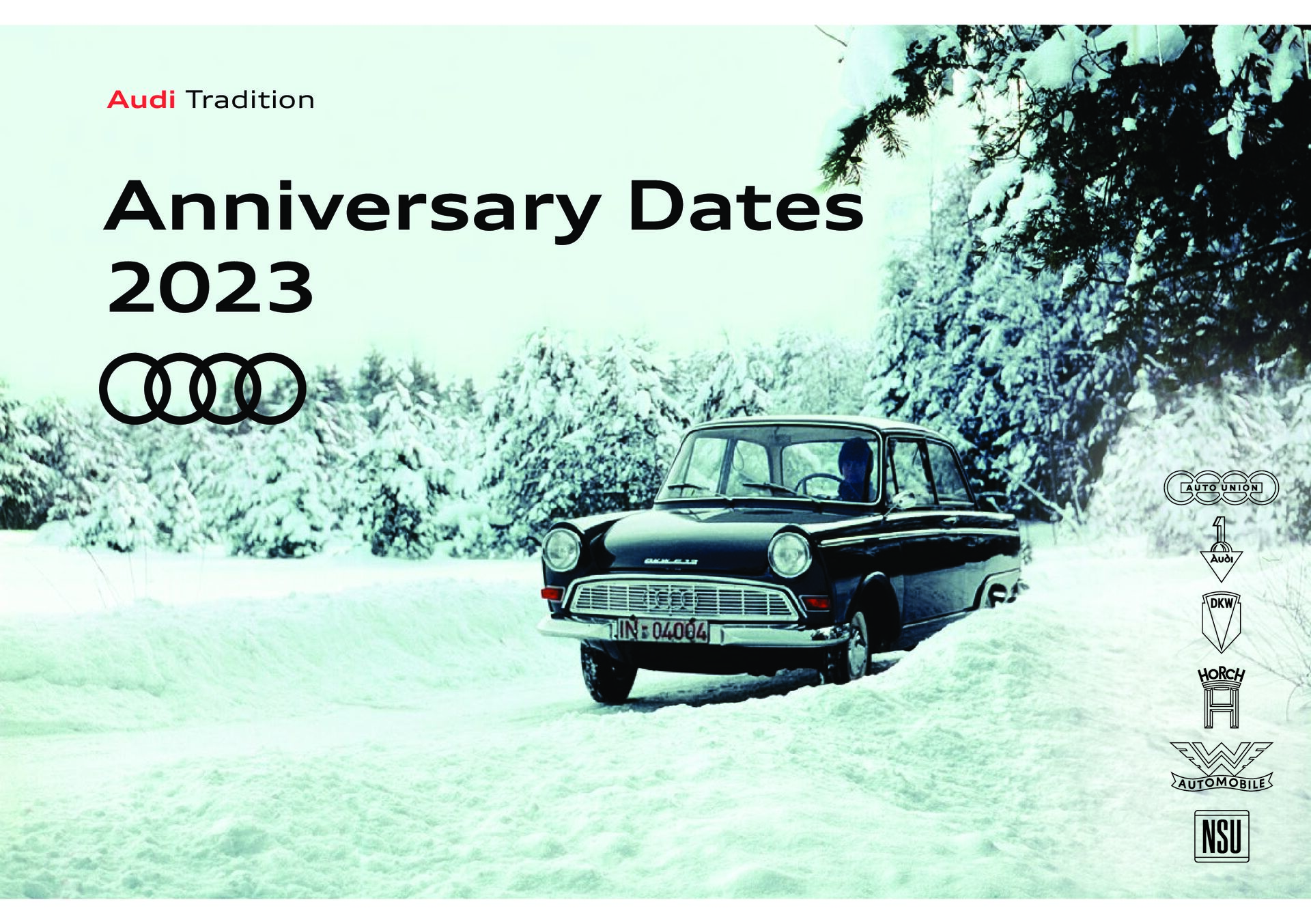 Anniversary Dates 2023
Anniversary Dates 2023
Anniversary Dates 2023 Audi Tradition Audi Tradition 2 Anniversary Dates 2023 Autumn 1998 25 years Audi TT Coupé ...........................................5 February 1993 30 years foundation of Audi Hungaria Motor Kft. . ....6 October 1988 35 years Audi V8 ....................................................7 September 1988 35 years Audi Coupé B3 ..........................................8 1983 40 years Audi Sport GmbH ......................................9 September 1983 40 years presentation of Audi Sport quattro ..........11 January 1983 40 years death of Stieler v.
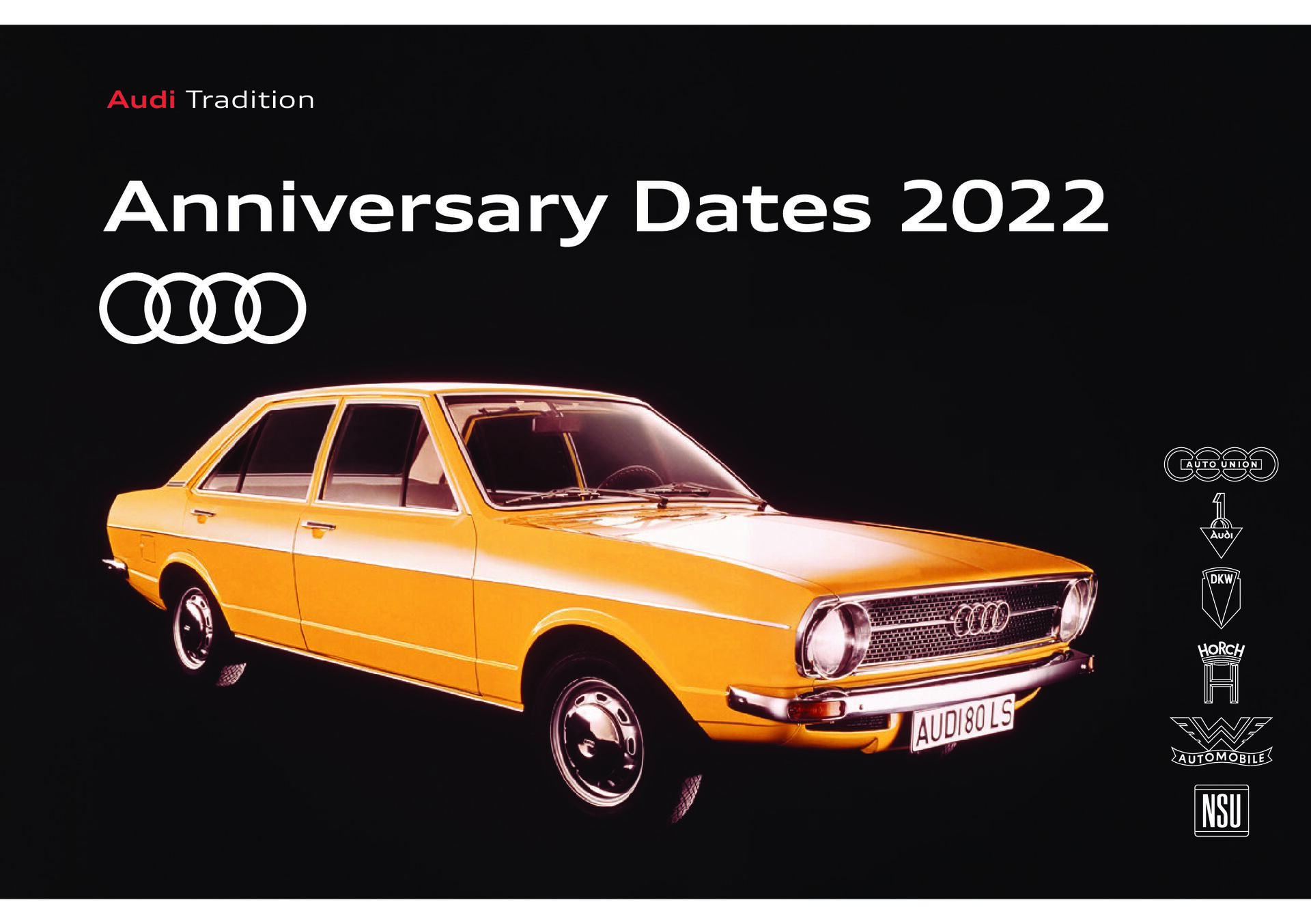 Anniversary Dates 2022
Anniversary Dates 2022
Anniversary Dates 2022 Audi Tradition Audi Tradition 2 Anniversary Dates 2022 Contents Anniversaries in Our Corporate History Autumn 1997 25 years of Audi AI 2 and A2 prototypes ....................4 September 1997 25 years since market launch of Audi S4 (B5) ...........5 1997 25 years since market launch of Audi A6 (C5) ...........6 September 1997 25th anniversary of death of Ludwig Kraus ..............7 September 1992 30 years since first Audi Avant in the B-series ...........8 Autumn 1982 40 years of third-generation Audi 100 .....................9 April 1977 45 years of five-cylinder engines at Audi ................10 August 1977 45 years since first Audi 100 Avant (C2) .................11 1972 50 years since first Audi 80 (B1) ............................12 August 1972 50 years since Dr. Piëch joined Audi .......................13 September 1967 55 years since unveiling of NSU Ro 80 ...................14 September 1957 65 years since NSU resumed car manufacturing .....15 February 1957 65 years since first NSU rotary piston engine .........16 June 1932 90 years since founding of Auto Union AG ..............17 June 1922 100 years of DKW motorcycle manufacturing ........18 June 1922 100 years since Dr.
 Audi Anniversary Dates 2021
Audi Anniversary Dates 2021
Anniversary Dates 2021 Audi Tradition Audi Tradition 2 Anniversary Dates 2021 September 1996 25 years Audi A3 ...................................................4 March 1991 30 years Audi Cabriolet ..........................................5 May 1991 30 years End of production of Audi quattro .............6 August 1991 30 years Audi S4 ....................................................7 September 1991 30 years Audi 80 (B4) .............................................8 September 1991 30 years Audi quattro Spyder and Audi Avus quattro concept cars ...............................9 September 1986 35 years Audi 80 (B3) ...........................................10 August 1976 45 years Audi 100 (C2) .........................................11 January 1971 50 years Vorsprung durch Technik ........................12 March 1966 55 years Last DKW passenger car ..........................13 April 1956 65 years DKW Electric Schnelllaster ......................14 December 1956 65 years Start of production of DKW Munga off-road vehicle ...................................................15 February 1951 70 years ago August Horch died ............................16 October 1931 90 years Horch twelve-cylinder .............................17 February 1931 90 years DKW F1 .................................................18 October 1926 95 years First Horch eight-cylinder ........................19 End of 1916 105 years DKW Dampfkraftwagen .........................20 1901 120 years First Horch automobile..........................21 Contents Anniversaries in Our Corporate History Audi Tradition 3 Anniversary Dates 2021 1996 25 years “Seven countries – seven victories” ...........22 1991 30 years Audi V8 DTM title defence .......................23 August 1956 65 years NSU speed records ..................................24 1956 65 years “Gustl” Hobl runner-up in World Motor- cycle Championship and German Champion ...........25 December 1956 65 years DKW 3=6 Monza records ................
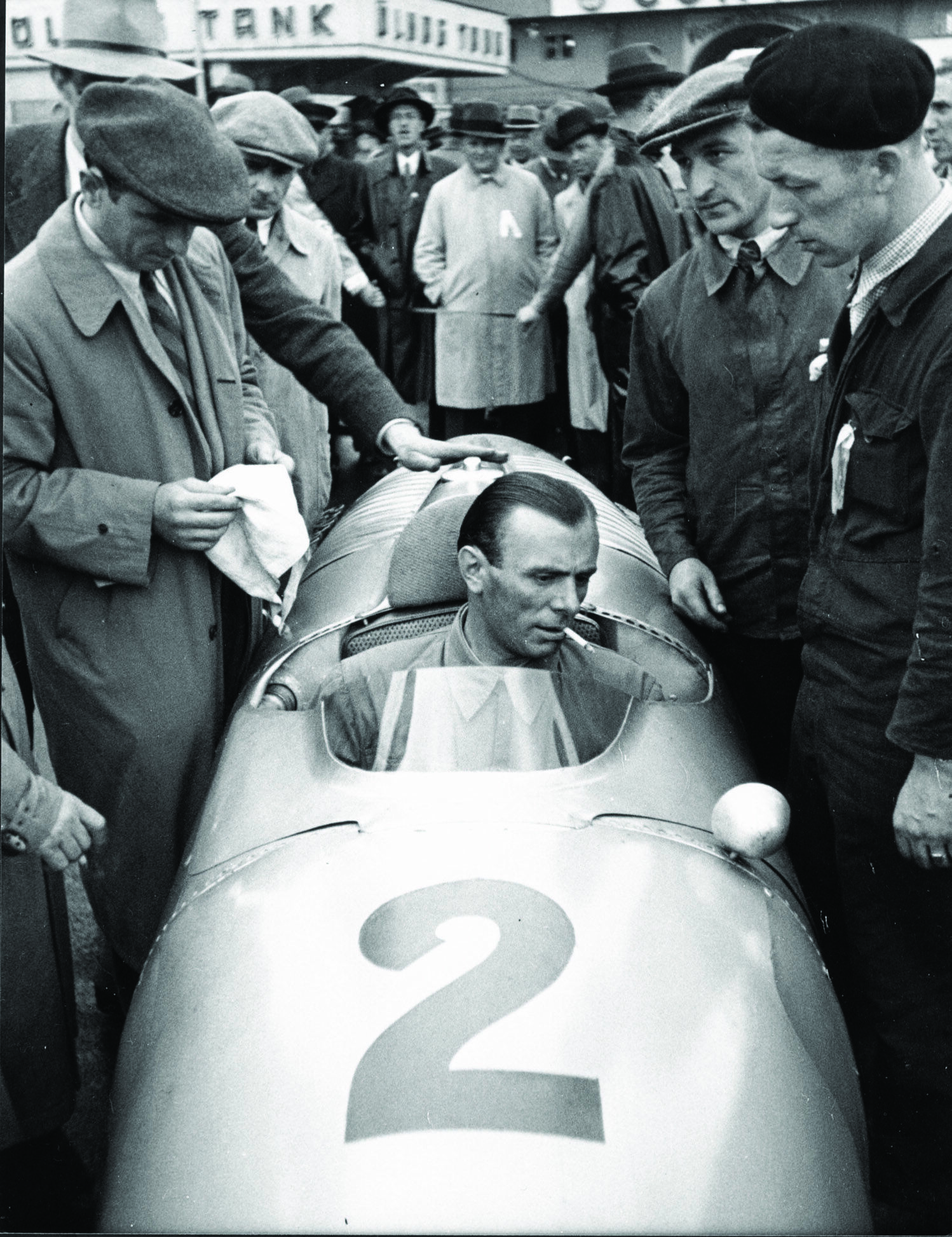 Achille Varzi would have been 100 on August 4th
Achille Varzi would have been 100 on August 4th
As an Auto Union works driver, Varzi found himself overshadowed by his young team-mate Bernd Rosemeyer, whereupon his own results tended to suffer. However, Varzi, who came from a wealthy family living in Galliate near Milan, managed a comeback after the war. He began his career as a racing motorcyclist, became Italian champion several times, won races in Alfa Romeo, Maserati, Bugatti and Auto Union cars and was victorious in several major races at the wheel of an Alfa Romeo in 1946 and 1947. Fate was unkind to him: on July 1st, 1948, Achille Varzi met with a fatal accident during practice for the Swiss Grand Prix on the Bremgarten track near Berne. The four rings of the Audi badge symbolise the brands Audi, DKW, Horch and Wanderer, which were later combined under the umbrella of Auto Union. Auto Union and NSU, which merged in 1969, made many significant contributions towards the development of the car. AUDI AG was formed from Audi NSU Auto Union AG in 1985. Together with the two traditional companies Auto Union GmbH and NSU GmbH, Audi Tradition nurtures and presents the deep and diverse history of Audi. The Audi museum mobile at the Audi Forum Ingolstadt is open from Monday to Sunday, from 9 a.m. to 6 p.m. You can find Audi Tradition on the Internet at http://www.audi.com/tradition AUDI AG, Audi Tradition, Press Peter Kober, Tel: +49 (0)841 89 39628; Fax: +49 (0)841 89 92567 e-mail: peter.kober@audi.de Christina Fuchs, Tel: +49 (0)841 89 92255; Fax: +49 (0)841 89 92567 e-mail: christina.fuchs@audi.de
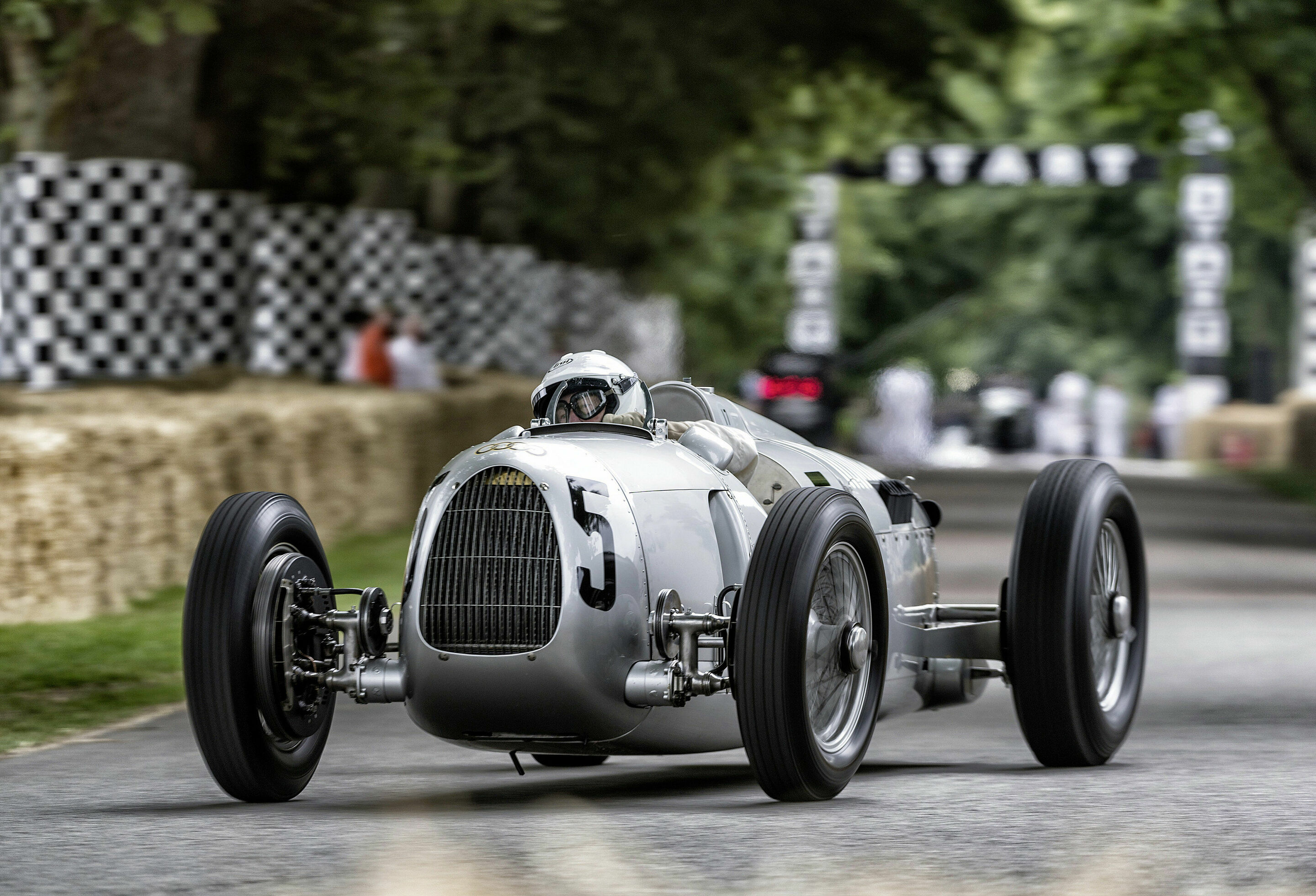 Audi Tradition in an Auto Union Silver Arrow at the silver jubilee
Audi Tradition in an Auto Union Silver Arrow at the silver jubilee
25th edition of the Goodwood Festival of Speed in England Audi Tradition takes an Auto Union Type C racing car and a Wanderer Streamline Special to the biggest historic motor racing event
Silver cars on their way to the silver jubilee: the Goodwood Festival of Speed, the world's largest historic motor racing event, celebrates its 25th edition from 12 to 15 July. Audi Tradition is participating in a fitting way with two silver-colored cars from its more than 100 years of history. An Auto Union Type C racing car from 1936 and a 1939 Wanderer Streamline Special will be competing in the event.
For the 200,000 visitors who are expected at Goodwood, the Auto Union Type C is an old friend – the model's presence at the Festival of Speed has always been one of the highlights of the event. With its 16 cylinders, 520 hp, top speed of 340 km/h and the engine located behind the driver, this racing car was viewed as a futuristic marvel when it was first presented in 1936. In the same year, Bernd Rosemeyer won the European driving championship and the German hill-climb championship. This year, Hans-Joachim Stuck will be taking the wheel of Audi Tradition's rebuilt Type C. It will be a very special moment for the former Audi Sport driver: in the 1930s, Stuck's father Hans was a member of the Auto Union team and when it came to hill races, he was almost unbeatable. Every time he drives a Silver Arrow, Stuck junior dons his father's original gloves and racing goggles. Audi Tradition is also sending another jubilee guest of honor to the race track: the Wanderer Streamline Special will be presented for the first time at Goodwood. Eighty years ago, Auto Union AG enrolled three of these models for what was then the world's toughest rally, Liège-Rome-Liège. The car had to do at least 50 kilometers per hour over the entire 4,000-kilometer course. On this race of around 100 hours, the drivers hardly stopped except to refuel.
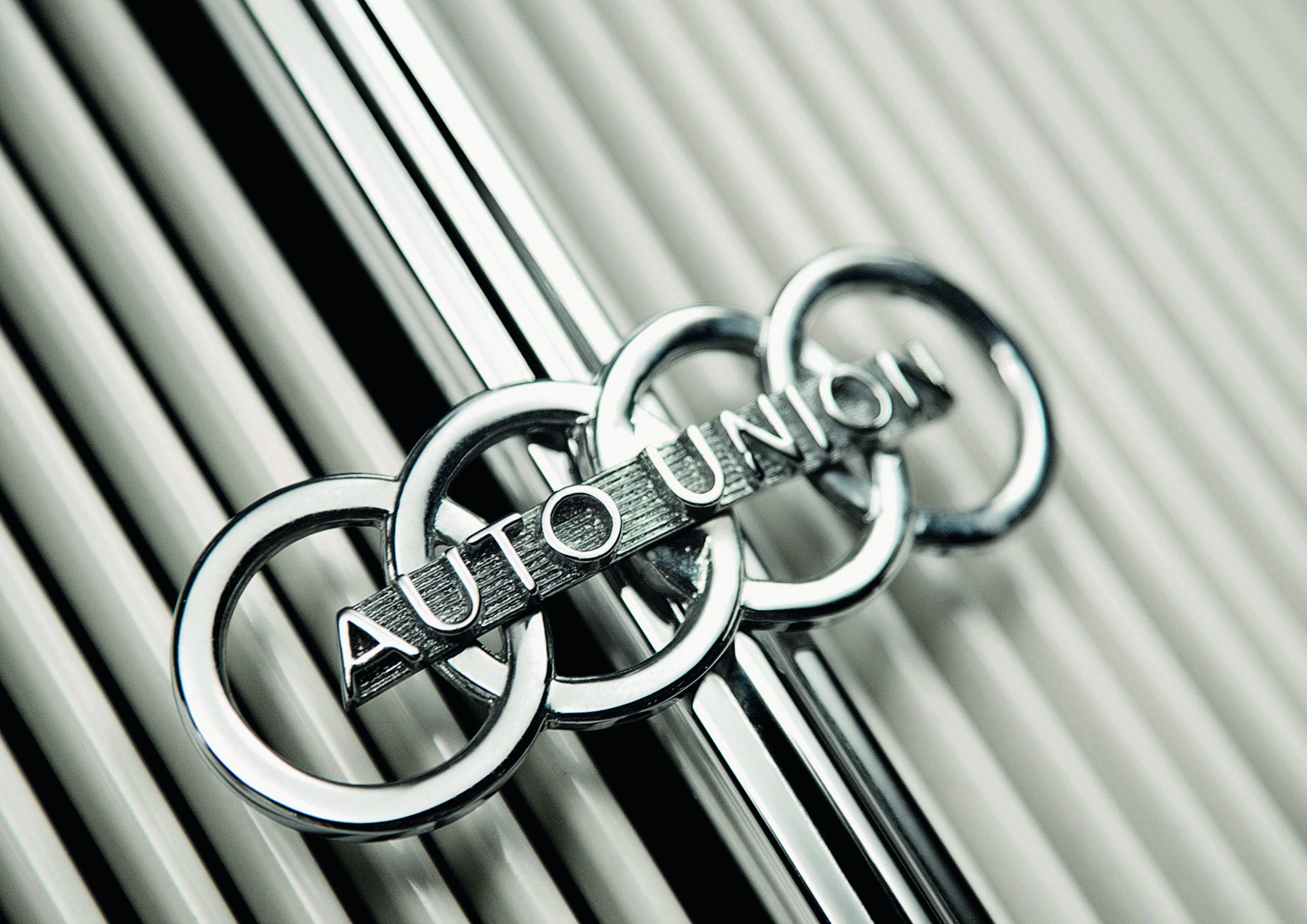 History of the Four Rings
History of the Four Rings
Audi After parting company from Horch Motorwagenwerke AG, August Horch established a new company in 1909, again with the declared aim of building automobiles. Since Horch was unable to make further use of his own name as an automobile brand, he resorted to the device of translating his own name into Latin: “Horch“ (“Listen!“) became “Audi”. This was the starting point for the Audi factory in Zwickau. August Horch delivered the first car to bear the new Audi brand name in May 1910. The new model gained immediate respect by scoring an unrivalled series of successes in the International Austrian Alpine Rally, at that time the toughest long-distance competition of its kind. Audi won this event in three successive years: 1912, 1913 and 1914. After the First World War the Zwickau-based company attracted attention in 1921 by being the first German car manufacturer to adopt left-hand drive and opt for a central, floor-mounted gear lever. This gave the driver better control over the car in traffic, so that all other German automobile manufacturers followed suit in subsequent years. The first Audi with a six-cylinder engine was introduced in 1923. It was equipped with an oil filter and air cleaner, not a widespread device at that time. An air cleaner did not become a standard feature until some years later. The Audi six-cylinder model was also among the first cars in Germany to have hydraulic brakes at all four wheels; the design was developed in-house at the Audi development department in Zwickau. In 1927, Chief Designer Heinrich Schuh introduced Audi’s first eight-cylinder car, the “Imperator”: an imposing vehicle, but one that reached the market too late, since sales of large luxury cars were falling. The company found itself in financial difficulties and was purchased in 1928 by Jörgen Skafte Rasmussen, the owner of the DKW business enterprise.
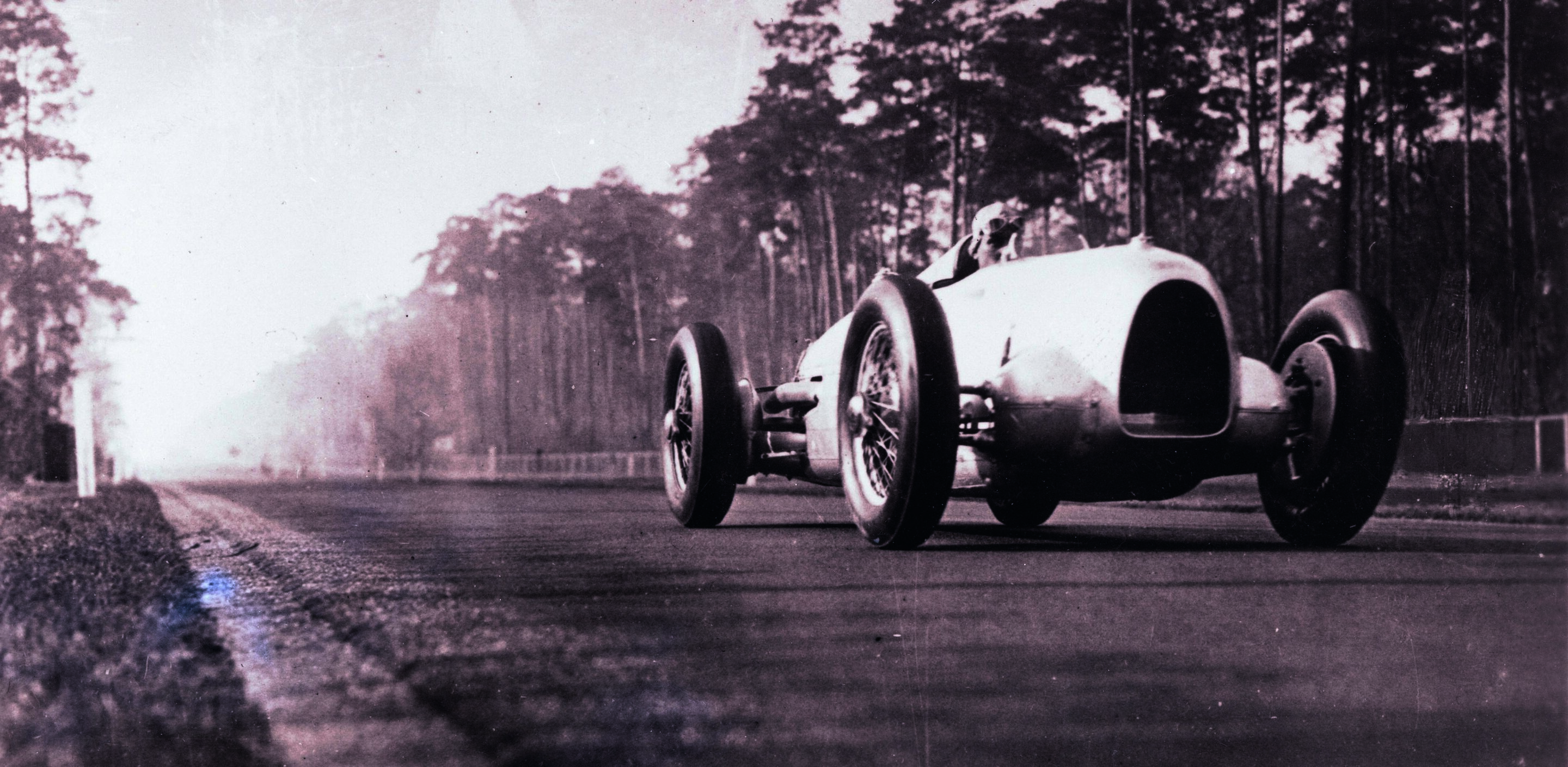 How the “Silver Arrow” legend was born
How the “Silver Arrow” legend was born
Although neither Auto Union, the company from which Audi in its present-day form developed later, nor Mercedes Benz won that event, it was not long before these two manufacturers began to dominate international Grand Prix racing, a situation that prevailed until the outbreak of the Second World War in 1939. It seems almost incredible today, but by 1936 the Auto Union racing cars were reaching speeds of up to 380 kilometres an hour on the long straights of the Avus circuit – truly, the birth of a legend.
The racing cars bearing the four-ring emblem were entered for the race to be held on Berlin’s Avus circuit on May 27, 1934. Driven by Hans Stuck, August Momberger and Hermann Prince zu Leiningen, this was their first appearance in competition. They were given a striking silver paint finish, but possibly their most remarkable feature was that the engine was located behind the driver. 1934 was the first motor racing season in which the designers had to comply with a new formula: the cars were limited to a total dry weight of 750 kilograms, but the engines could be of any size and there was no restriction on the type of fuel. Ferdinand Porsche was the brain behind the Auto Union racing cars, so to speak. He designed them for the new motor-vehicle manufacturing group of that name that had been created in 1932 by a merger of the Audi, DKW, Horch and Wanderer brands, and supervised their construction and testing from March 1933 onwards at Auto Union’s racing department, which was located at the Horch factory in Zwickau. Approval of his design was subject to the engines developing at least 250 horsepower at 4500 rpm. Driver Hans Stuck confirmed this with a world speed record run on the Avus circuit in March 1934. During the Avus race held shortly afterwards, the new Auto Union racing cars put up a most impressive show. Even during practice, Hans Stuck’s average lap speed of 245 km/h had made it clear who was the fastest contender.
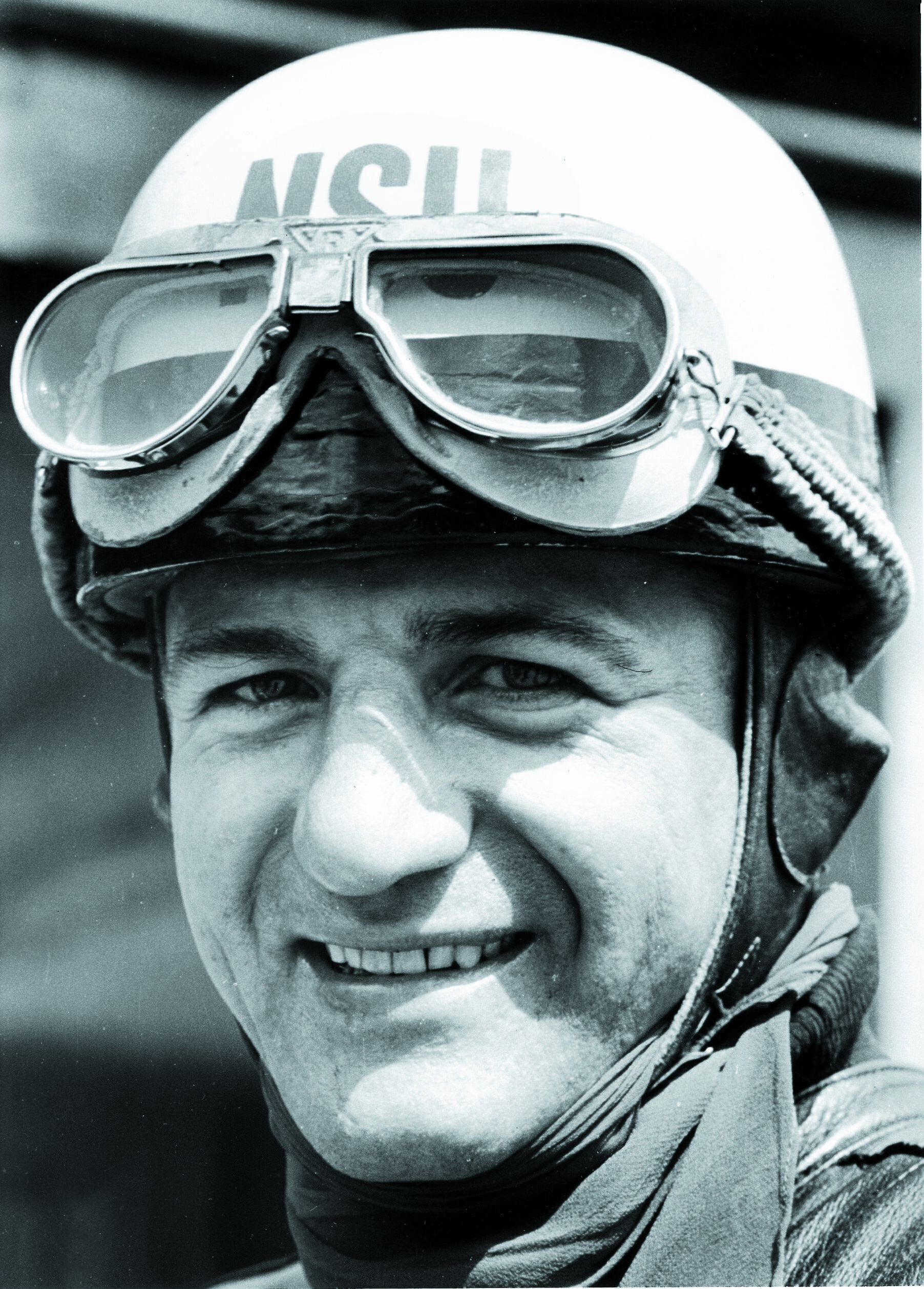 H.P. Müller motorcycle world champion for NSU
H.P. Müller motorcycle world champion for NSU
Having matured alongside Bernd Rosemeyer in the DKW motorcycle team, Müller was earmarked as Rosemeyer’s mid-term successor in the Auto Union Silver Arrow after the hero of this time suffered a fatal accident in 1938. H.P. Müller won the French Grand Prix in 1939 and was leading the season’s European Grand Prix championship – the predecessor of what is now the Formula One World Championship – when the war broke out. Tragic for H.P. Müller: no more races took place and the National Socialist government named the 1939 European Champion – Hermann Lang of Mercedes-Benz. Lang had won more races; H.P. Müller, being the great sportsman that he was known to be, never uttered a single complaint. When the war was over, H.P. Müller had to start from scratch – and this also meant in the financial stakes. He recommenced racing in motorcycle championships as a privateer and had won seven championship titles in every single class by his final season. Meanwhile, the end of the career of works drivers at NSU appeared to be sealed in 1954. After the death of Rupert Hollaus in an accident during a race, the world champions from Neckarsulm retired from motorsport and offered their works drivers so-called production racers – enhanced road motorcycles. Müller, soon to be 46, once again took the risk and competed privately in the 1955 World Championship on a 250 cc Sportmax. The exceptionally gifted mechanic and innovator went on to write a chapter in motorsport history: he was the first privateer to become world champion. After 26 years as a racing driver, the “Renntiger” bowed out at the pinnacle of his career. A sensation was still to follow: NSU nominated him in 1956 to carry out world record attempts at a salt lake in the US state of Utah. Hermann Paul Müller set 38 new world records here. He died on 30 December 1975 in Ingolstadt – where he is also buried – just after his 66th birthday.
